Staying Child Focused in South Africa
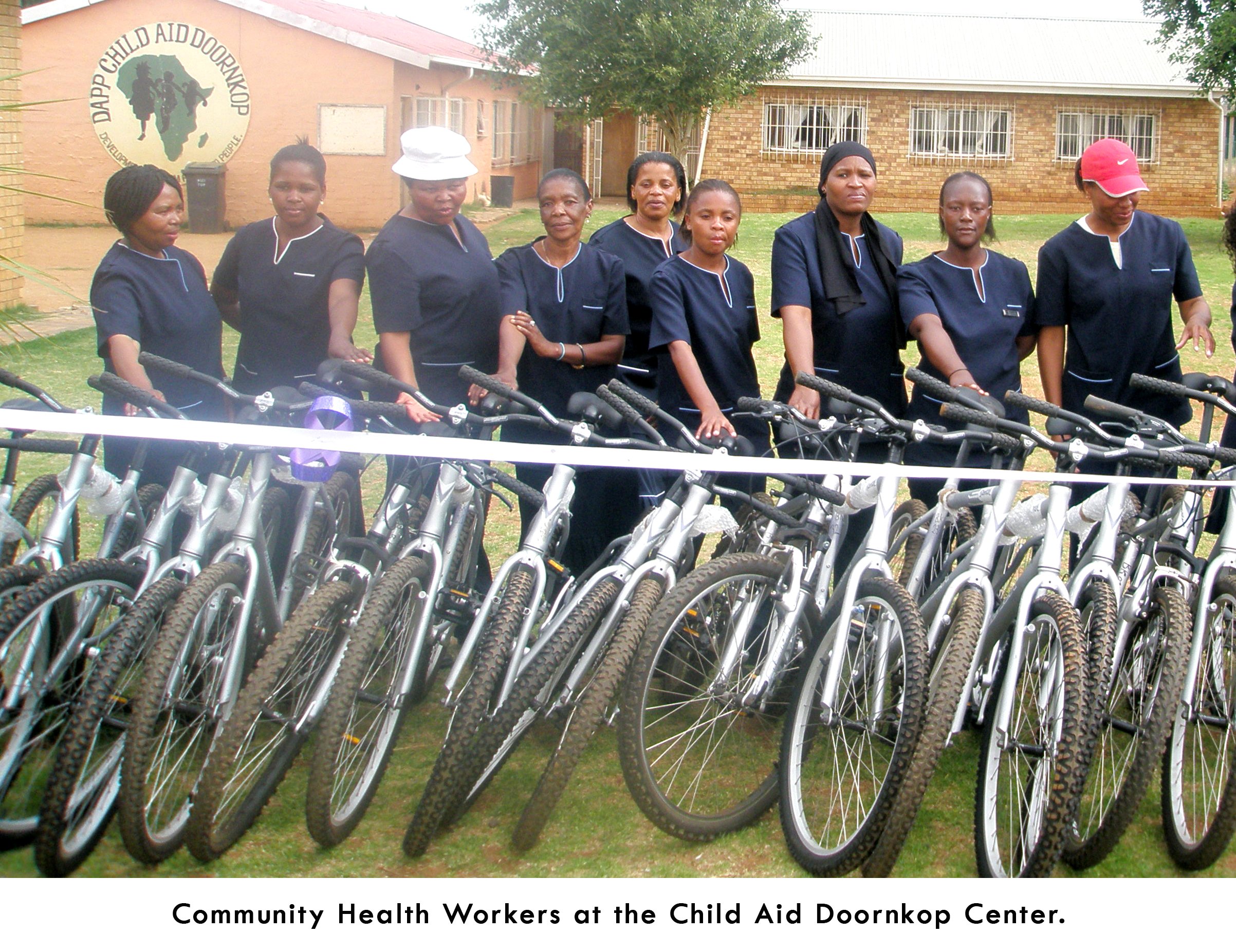 The overall number of people in extreme poverty around the world has been declining; however, in Sub-Saharan Africa the number has been increasing according to the World Bank.
The overall number of people in extreme poverty around the world has been declining; however, in Sub-Saharan Africa the number has been increasing according to the World Bank.
Poverty impacts children the hardest. It threatens their growth, their health and nutrition, their education, and their possibility of being kept safe from harm and exploitation. Poverty creates an environment that is damaging to children's development in every way: mentally, physically, emotionally and spiritually.
Planet Aid has been supporting community-based development initiatives in Sub-Saharan Africa that recognize how poverty affects children and, in turn, the entire course of development. These projects, called "Child Aid," address a multitude of needs within local communities.
Planet Aid is a long-time benefactor of the Child Aid project in the Doornkop area of South Africa, which is run by Humana People to People South Africa (HPP-SA).1
Snake Park and Silver Town
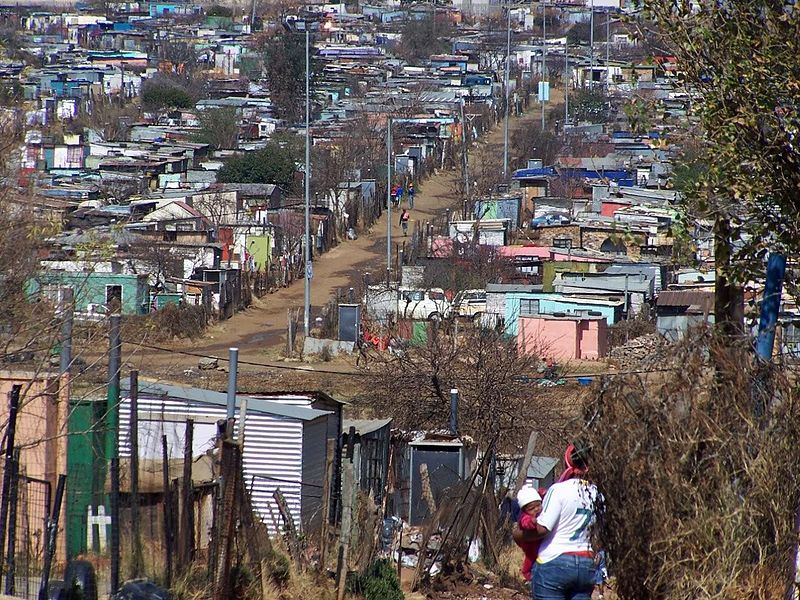 Photo by Kevin Gabbert
Photo by Kevin Gabbert
Doornkop is an abandoned farming area located on the outskirts of the city of Johannesburg at the foot of a polluted mine dump. As urban pressures mounted in the burgeoning metropolis, Doornkop is where the least advantaged residents fled to find refuge. Migrants from rural areas and neighboring countries have sought shelter there, too, while striving to secure a better life for themselves in the surrounding region.
Doornkop was first known as "Snake Park," because it was a wild undeveloped place of thorn bushes, mine tailings, and snakes. As Johannesburg and its suburbs grew, so did Snake Park. As more shanties sprang up, it became known as "Silver Town," because of the characteristic silvery tin roofs. It is now called Doornkop (the official name), which means "thorn hill" in the language of Afrikaans.
Doornkop has since seen many improvements, including the building of roads, RDP housing, and other facilities, but it remains one of the poorest regions in the nation. Residents suffer from illnesses and inadequate hygiene, subsist on low incomes, and have little education. Among the many challenges faced is the number of orphans needing care. Due to the prevalence of HIV/AIDS in the area, many children have lost one or both parents to the disease.
Child Aid's Impact in Doornkop
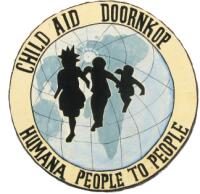 Child Aid Doornkop (CAD) was HPP-SA's first community development initiative and was launched in 1998. Roland Ngoh, who became the CAD Project Leader in 2004, said that when the project started there were a number of challenges to tackle. "Unemployment was above 80 percent. [There was] a lot of crime, teenage pregnancy, [and] a lack of amenities. No schools, no health centers, just nothing. It was an informal settlement—no major houses, no good buildings—just shacks."
Child Aid Doornkop (CAD) was HPP-SA's first community development initiative and was launched in 1998. Roland Ngoh, who became the CAD Project Leader in 2004, said that when the project started there were a number of challenges to tackle. "Unemployment was above 80 percent. [There was] a lot of crime, teenage pregnancy, [and] a lack of amenities. No schools, no health centers, just nothing. It was an informal settlement—no major houses, no good buildings—just shacks."
Since that time, schools and health facilities have been established and other infrastructure built. Ngoh credits the will of the people themselves to improve the situation in Doornkop, and their ability to utilize the assistance received from HPP-SA and others to maximum effect.
Indeed, a key aim of the CAD project, no matter the focus area, was to create momentum for development through a sense of shared destiny within the community and reliance on one another to improve their situation. It is this type of mobilization strategy that has contributed to the success of the project.
Click here to read about some of CAD's recent accomplishments.
A Recognized Partner of the Community
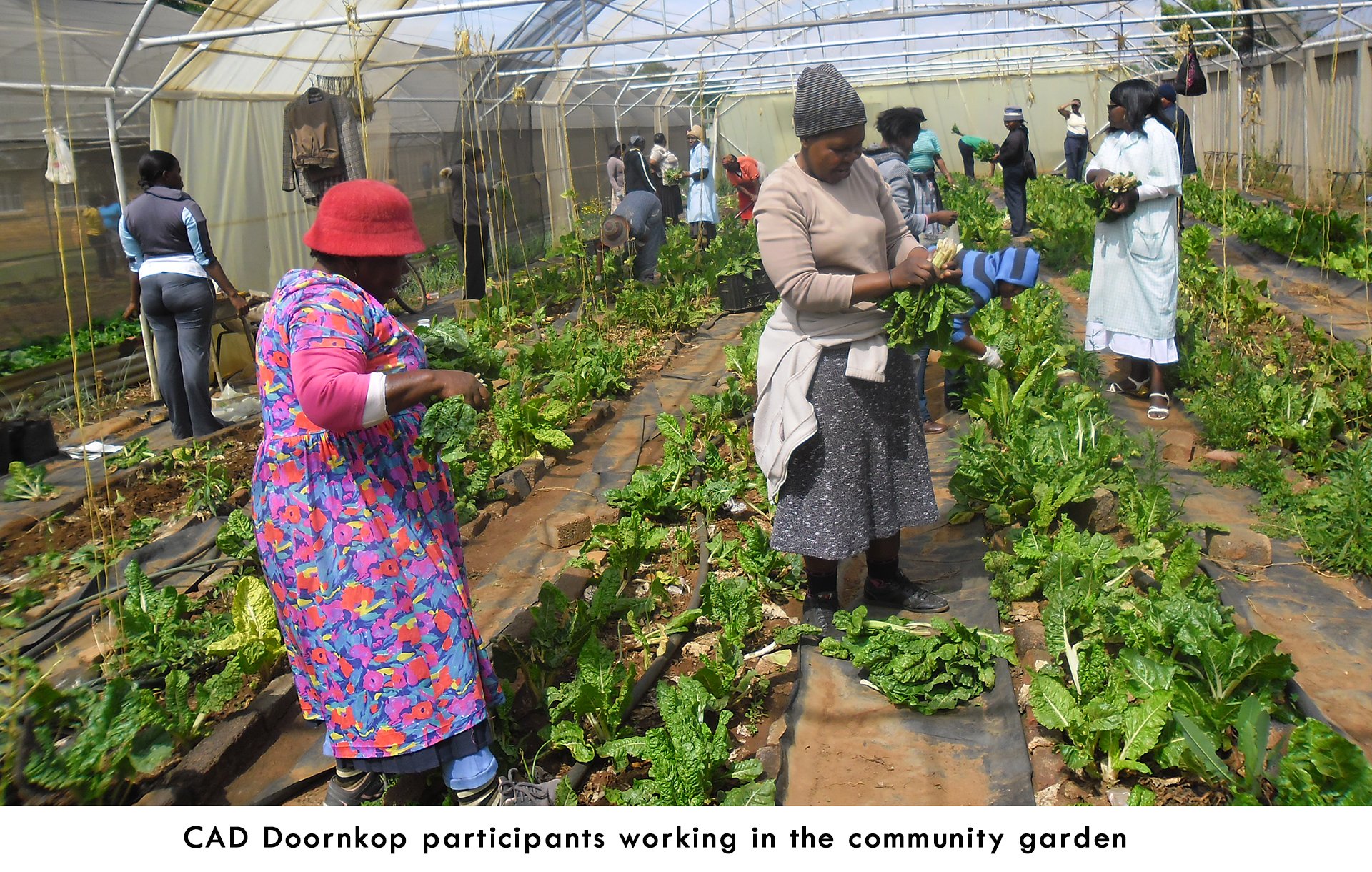 Recently, HPP-SA's work was recognized by researchers at the University of Johannesburg in cooperation with the Centre for Social Development in Africa (CSDA). A series of research studies culminated in a 2017 book entitled, Development, Social Policy and Community Action.2 Center staff spent years working with Child Aid participants at the Doornkop project. The authors came to learn that HPP-SA (referred to as "Humana" in the book) had a unique understanding and respect for the community.
Recently, HPP-SA's work was recognized by researchers at the University of Johannesburg in cooperation with the Centre for Social Development in Africa (CSDA). A series of research studies culminated in a 2017 book entitled, Development, Social Policy and Community Action.2 Center staff spent years working with Child Aid participants at the Doornkop project. The authors came to learn that HPP-SA (referred to as "Humana" in the book) had a unique understanding and respect for the community.
"This was an international NGO, integrated in the community, providing good services," wrote Tessa Hochfeld, CSDA associate professor. "The staff understood the community; they were very grassroots, with local people working in their local community, but also with good accountability."
Among the ways in which Child Aid built its connection with the community has been by employing people from the area to serve as project field staff. "Most of them [the field staff] were born and bred in that community," said Ngoh. "They know what is happening. They know the culture."
Read about the Child Aid Doornkop Project in the Mail and Guardian.
Jeroen Gradener, Associate Professor at the Amsterdam University of Applied Sciences, recognized the role that CAD's area leaders had in influencing local residents in bettering their situation. In his dissertation Keys to the Community, published in 2016, he wrote: "In an area suffering from poverty, poor health, and the burdens of the Apartheid history, these area leaders are well aware of the value of the background they share with the residents. Living by example, they represent a perspective of personal growth."3
The familiarity and trust that area leaders have in the community has contributed greatly to the success of the program, which enables the leaders to mobilize residents to bring about change. In the book, the CSDA researchers considered this mobilization essential:
The focus on communities supports the notion that inclusion and mobilization of potential beneficiaries of development efforts is essential for their relevance and effectiveness and that local people supported by external resources can implement programmes that significantly contribute to development efforts.4
This ability to mobilize has been especially important in the area of HIV/AIDS, where mistrust and fear can hamper prevention and treatment efforts.
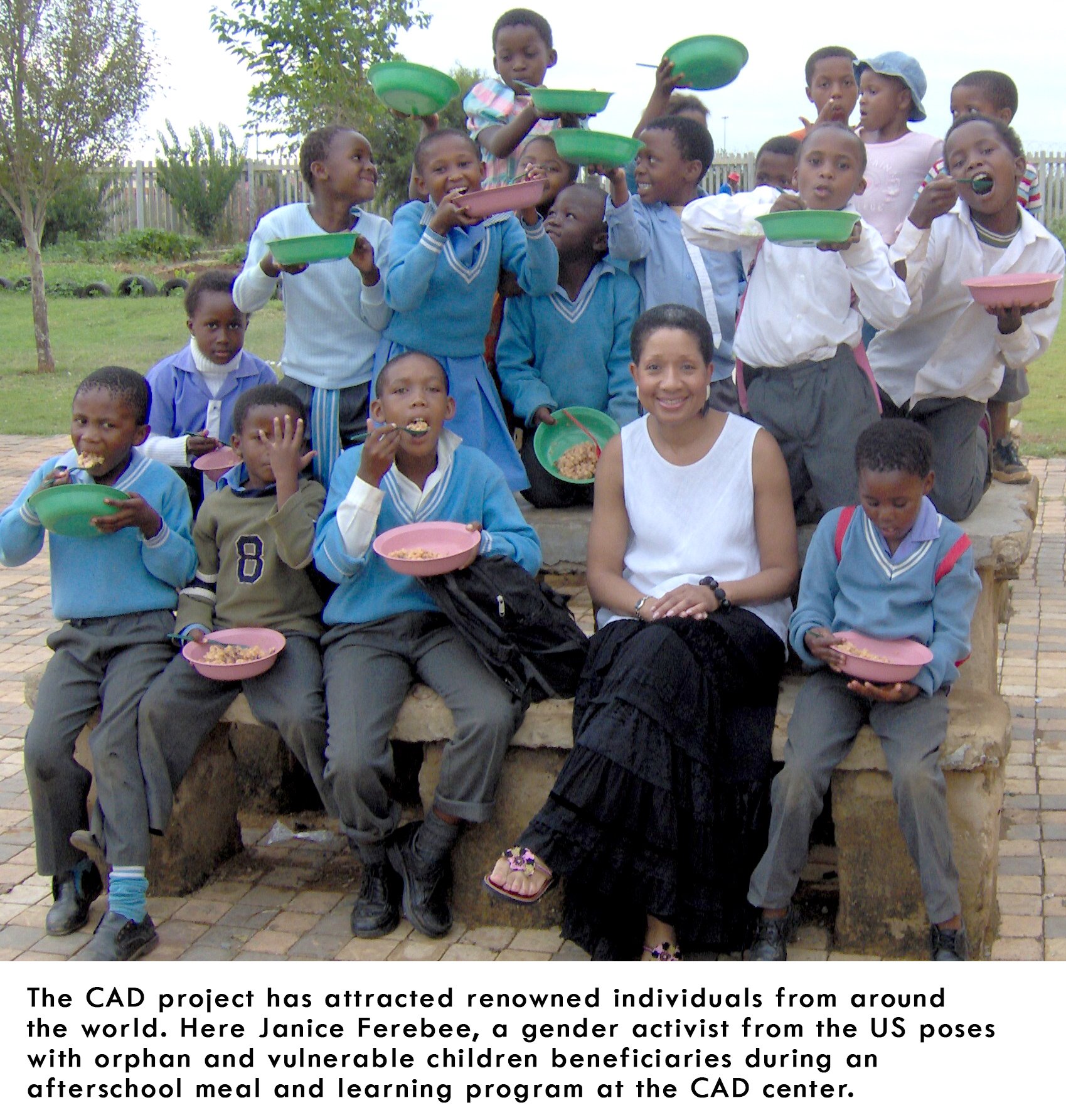
A Feared Disease
South Africa has the largest population of people living with HIV, a reality that tears families asunder and deepens levels of poverty. Because of its severe negative impacts, the HIV/AIDS epidemic has been a main focus of HPP-SA.
Doornkop has a high prevalence of HIV, partially due to the transient nature of its population. CAD's work has involved distributing hundreds of thousands of condoms and spreading knowledge of HIV/AIDS and its causes to help bring the disease into the light and break the stigma that hampers open discussion about prevention and treatment. CAD's community health workers also provide home-based care for those suffering from the disease and in-home HIV testing so that residents can be aware of their status and obtain treatment. (In-home testing is more effective in encouraging testing as it avoids the stigma of having to go to a clinic.)
Along with Child Aid, HPP-SA has implemented specific programs to combat the HIV/AIDS epidemic. Total Control of the Epidemic (TCE) is a door-to-door campaign where TCE field officers, similar to that of Child Aid, systematically educate, inform, and counsel each individual, within a specified area, empowering them to make positive decisions about their health and sexual behavior.
Orphans and Early Education
Many children in Doornkop are orphans (often due to HIV/AIDS), or live in families where all adults are unemployed. CAD works with these children and their families to ensure that they are receiving available social assistance and ensure the children are attending school.
CAD also helps children with school uniforms, school fees, food, and healthcare, and has partnered with the Gauteng Departments of Health and Gauteng Department of Social Development (South African provincial agencies) to provide proper hygiene and sanitation.
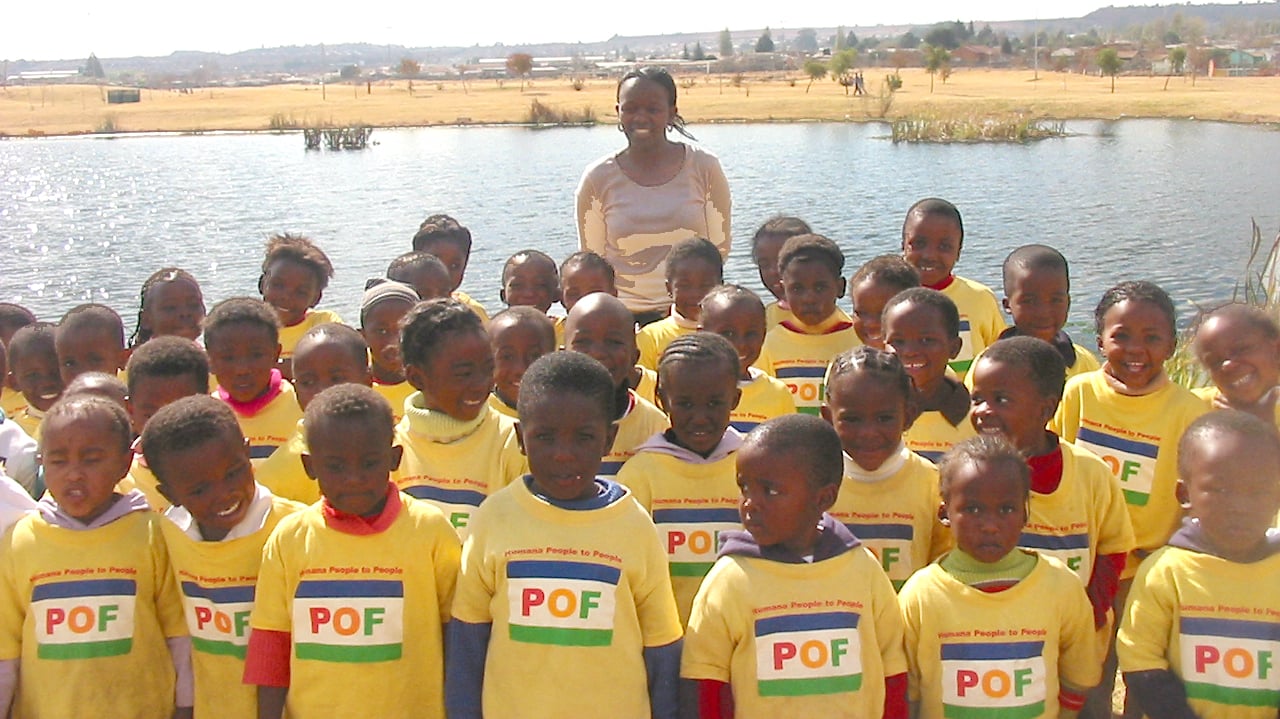
Project Leader Roland Ngoh said he was especially pleased with the development of preschools in the community during his tenure with the project. At the start, there were no primary schools, let alone preschools (early education is not part of the formal education system in South Africa).
Today, there are more than 30 preschools within the boundaries of Doornkop—and CAD's influence in providing quality training and assistance was a big part of mobilizing that effort. "We [CAD] have two of our own, and we work with 20 others," Ngoh said. "We were able to empower them by assisting them to register and be legally recognized by the Department of Social Development." Preschools in impoverished areas have a much greater chance of receiving support from the government once duly registered.
Child Aid Doornkop's Legacy
CAD has been working to mobilize the community in Doornkop to improve local conditions and create more opportunities to better themselves. It has established a strong relationship with the community, learning their specific needs and hopes, and then providing the resources needed for them to lift themselves out of poverty.
Planet Aid and HPP-SA together believe that this ground-up approach not only works best for community development but is the right thing to do.
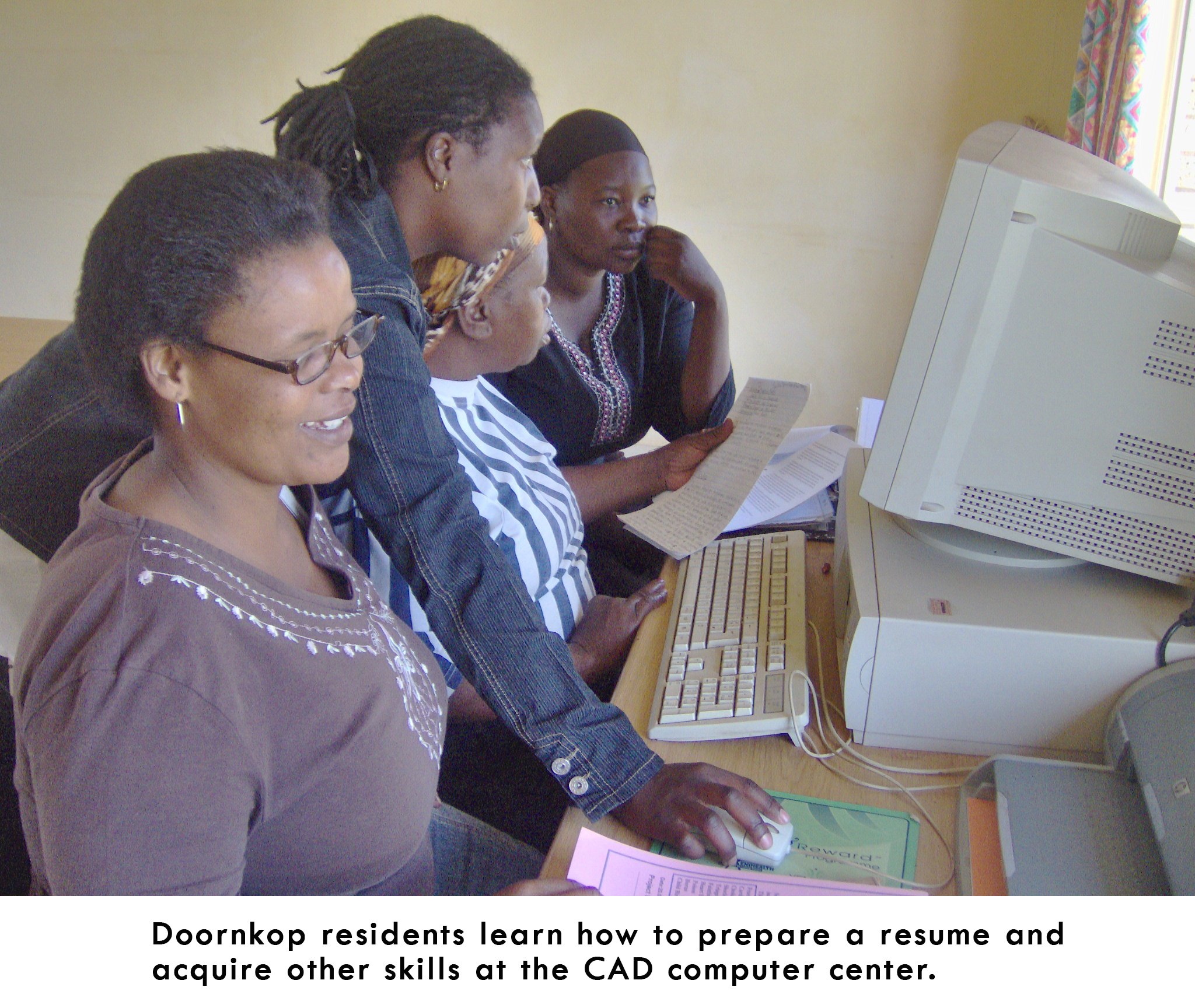
Additional Information
Child Aid Doornkop's Recent Accomplishments
The CAD project has benefited more than 14,000 individuals in the Doornkop area since its launch in 1998
Here is a short list of recent accomplishments:
- Helped participants derive additional income by supplying wool and providing training in knitting to produce various saleable products.
- Provided training in HIV counseling and testing, which helped participants obtain jobs at local health facilities.
- Conducted local campaigns to stop random dumping of trash (including dead animals) in wetland areas where they can create a health hazard.
- Operated preschools that helped nearly 1,000 young children obtain an early education.
- Helped 300 orphans and their caretakers obtain social benefits from government agencies.
- Distributed more than 15,000 boxes of condoms during educational sessions held during Condom Promotion Week in February on 2017.
- Helped more than 1,200 children obtain HIV tests (with parental consent). Children who were identified as HIV-positive were assisted and placed on treatment.
- In collaboration with the Gauteng Department of Social Development, CAD trained more than 12 young female active volunteers to become Social Auxiliary Workers, a scarce skill in the country.
Return to "Child Aid's Impact in Doornkop"
Opening the Door to Research
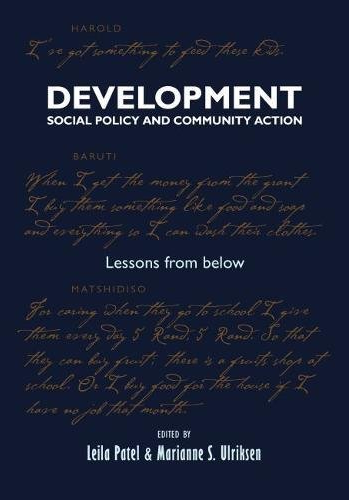 Child Aid Doornkop has helped connect researchers to the community of Doornkop prior to the series of research projects that resulted to the realization of the book: Development, Social Policy and Community Action. During Ngoh's time at CAD, he worked to be as involved in the research process as possible. He said that he believed the partnerships formed and the research done would greatly benefit the community even if the benefits are not practically seen for a number of years. Ultimately, CAD's desire is to mobilize, educate, and empower the community to better themselves. Working daily to present themselves as beacons of what could be, the project staff tirelessly fights for the upward movement of the community, its children, and their livelihoods.
Child Aid Doornkop has helped connect researchers to the community of Doornkop prior to the series of research projects that resulted to the realization of the book: Development, Social Policy and Community Action. During Ngoh's time at CAD, he worked to be as involved in the research process as possible. He said that he believed the partnerships formed and the research done would greatly benefit the community even if the benefits are not practically seen for a number of years. Ultimately, CAD's desire is to mobilize, educate, and empower the community to better themselves. Working daily to present themselves as beacons of what could be, the project staff tirelessly fights for the upward movement of the community, its children, and their livelihoods.
The series of research studies that led to the publication of the book: Development, Social Policy and Community Action began in 2010 and was focused in the Doornkop area because of the great need. During the planning phase, Dr. Leila Patel, the South African Research Chair in Welfare and Social Development and the Director of the CSDA at the University of Johannesburg, came to Doornkop to speak with the management of HPP-SA, which was the leading NGO in the area. She writes, "The study findings highlighted the extent of deprivation particular to the Doornkop community and resulted in the prioritisation of Doornkop.".
During the five years of research, CAD worked side by side with the researchers, connecting them to the community, explaining the benefits of the research to the community, and translating when necessary. "We first told them [community members] why they [researchers] are here, what their interest is, and how the community is going to benefit," Ngoh said.
One goal of the research was to analyze "how to effectively leverage research findings and partnerships to support communities to effect change." HPP-SA's commitment to the community helped open the door to a better understanding of the Doornkop community and the challenges it faced:
Throughout the various research projects, Humana has helped in understanding the community, arranged access to facilities, [and] enable access to research participants… Humana's involvement was motivated by a commitment to the community.
Research to Benefit the Community
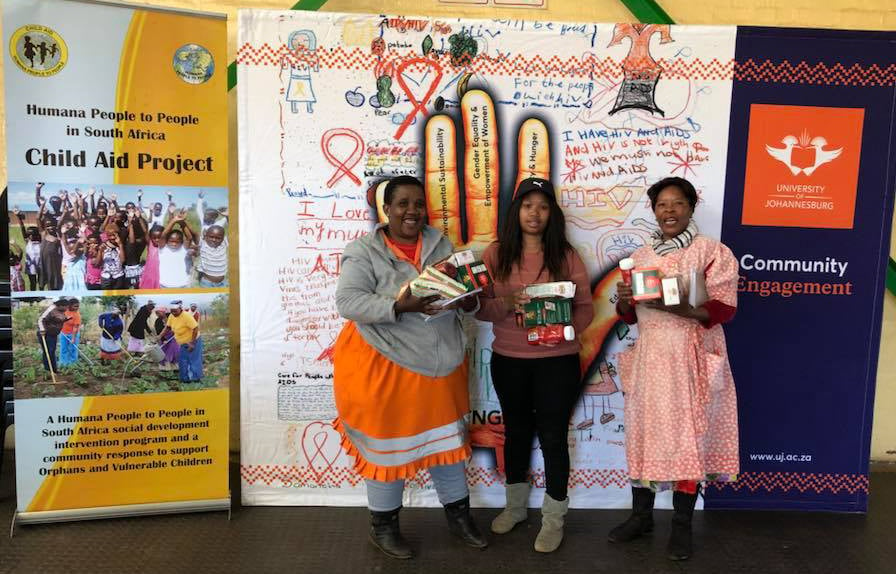
The Doornkop community benefitted from this research in many ways, while some are yet to be seen, some were immediate. Due to the strong community mobilization to participate in the research, many community members were able to learn of social programs that they could benefit from and gain the proper identification to do so. Most social programs in South Africa are available primarily for citizens; however, many citizens don't realize or know how to navigate the processes for gaining benefits afforded to them.
One of the largest benefits of the research will take a bit of time before it is realized. "The community will benefit by sending the research to the policy makers, and they will be able to see that, yes, these people don't have jobs, they don't have enough schools, they don't have adequate health facilities," Ngoh said. "So this is a way to advocate for those things in that community."
Along with sending the official findings (in the form of the book) to the policy makers, the researchers and HPP-SA held community events where the researchers presented their findings to the community. At the most recent one just this month, policy makers for Doornkop were also in attendance, allowing them to hear the findings and also converse with the community members about their situation.
Sources
1 HPP-SA is a member of the Humana People to People Federation of which Planet Aid is also a member.
Return to "Snake Park and Silver Town"
2 Development, Social Policy and Community Action; Lessons from below. Edited by Leila Patel and Marianne S. Ulriksen. Cape Town, South Africa: HSRC Press, 2017. Chapters 1, 6, and 11.
3 Jeroen Gradener, Keys to the Community. PhD diss., Utrecht University, 2016, Academia (9789039365939).
4 Op. cit. Patel and Ulriksen.
